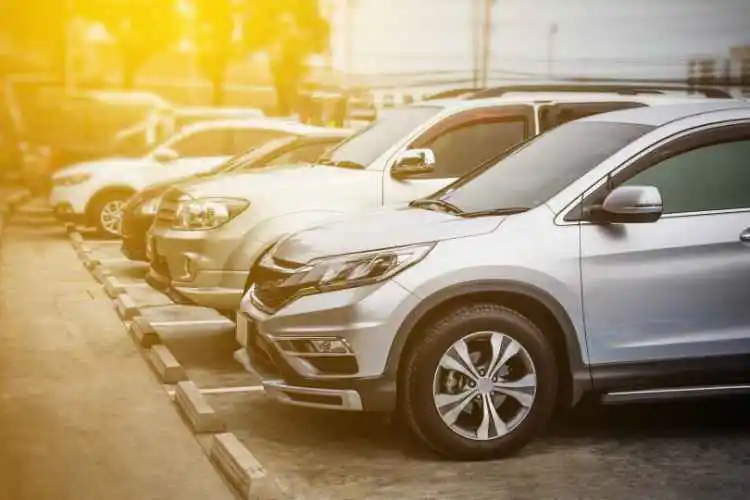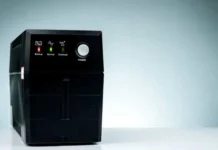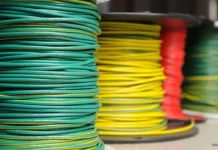If you live in a place like Michigan, you know how cold and snowy winters can be. It’s a common question to wonder if solar panels can still work during the winter months when there is less sunlight.
Solar panels have come a long way over the years. There’s a perfect type for your home regardless of where you live. If you’ve been considering solar panel installation but wondered if “do solar panels work in winter?” – then read on to find out the answer.
How Do Solar Panels Work?
Solar panels work by harnessing the power of sunlight to create electricity. Each solar panel is made up of smaller units called solar cells. These solar cells are made of special materials called semiconductors, which are able to convert sunlight into electricity.
When sunlight hits a solar cell, it creates an electric field that allows tiny particles called electrons to flow through the material. These flowing electrons create a flow of electricity, which can be used to power things like your home or school.
A bunch of solar cells are connected together to form a solar panel. And a bunch of solar panels can be connected together to form a solar array, which is like a big group of solar panels all working together to create a lot of electricity.
What Factors Affect Solar Panel Performance in the Winter?
From temperature and daylight hours to snow and ice coverage, it’s important to understand how these factors can affect the efficiency of solar panels in colder weather. While solar panels are designed to operate in a wide range of conditions, there are several factors that can impact their performance during the winter months. Here they are:
Sunlight
During the winter months, there are fewer hours of sunlight, and the angle of the sun is lower in the sky. This means that solar panels receive less direct sunlight, which can affect their performance.
Temperature
Solar panels work more efficiently in cooler temperatures. However, if the temperature drops too low, the panels can freeze, which can damage them. Most solar panels are designed to withstand cold temperatures, but it’s still important to ensure that they are installed correctly.
Snow and Ice coverage
In regions with heavy snowfall or freezing temperatures, snow and ice can accumulate on solar panels, reducing their efficiency. This is because snow and ice can block sunlight from reaching the solar cells. In some cases, it may be necessary to clear snow and ice from solar panels to ensure that they are operating at maximum efficiency.
Wind
Cold winter winds can blow snow onto solar panels, which can reduce their performance. Additionally, strong winds can damage or displace solar panels. Therefore, it is important to ensure that solar panels are securely installed and protected from strong winds.
Clouds
When it comes to solar panels, clouds can have a big impact on their performance. This is because solar panels rely on sunlight to generate electricity. Solar panels in cloudy weather may only generate a fraction of the energy that they would on a sunny day.
Additionally, some types of solar panels are designed to be more efficient in low light conditions, such as on cloudy days or in the early morning or late afternoon.
Angle of the Sun
The angle of the sun changes throughout the day and throughout the year. During the winter months, the angle of the sun is lower in the sky, which means that solar panels receive less direct sunlight. This can reduce their efficiency, but installing solar panels at the correct angle can help to minimize this impact.
Latitude
The amount of sunlight that solar panels receive also depends on the latitude, or the distance from the equator. In general, solar panels will receive less sunlight in areas that are farther from the equator, which can affect their efficiency in the winter months.
How Do Solar Panels Work in Winter?
To ensure that your solar panels are operating at peak performance during the winter months, there are several steps that you can take. It’s essential to get more helpful information and installation strategies that can help you maximize the amount of energy that your solar panels are able to generate. Here are some of them:
Placing in the Right Orientation
It’s important to install solar panels in a location that receives maximum sunlight during the winter months. South-facing roofs are typically the best location for solar panels in the northern hemisphere.
Tilt the Panels to the Right Direction
When solar panels are installed, they are typically mounted at an angle, which is called the tilt angle. The tilt angle is important because it affects how much sunlight the solar panels receive, and how efficiently they can generate electricity.
In general, solar panels should be tilted at an angle that allows them to capture the most sunlight during the winter months. This is because during the winter, the sun is lower in the sky and the angle of the sun’s rays is more oblique. If solar panels are tilted at the correct angle, they will be able to capture more of the sun’s energy, even when it is lower in the sky.
Do Regular Maintenance
Maintenance refers to the actions taken to keep solar panels in good working condition. Like any other piece of equipment, solar panels need to be cared for and checked on regularly to ensure that they are functioning properly.
Some common maintenance tasks for solar panels include cleaning, checking for damage, and inspecting connections. Solar panels can get dirty over time, which can reduce their efficiency. Cleaning the panels can help to remove dirt, dust, and other debris that may be blocking the sunlight from reaching the solar cells.
Making the Most of Your Solar Panels in the Winter
Solar panels are a fantastic choice to power your home in Michigan. They are very efficient and have the ability to function in cold climates.
With the right kind of investments, Michiganders will benefit from clean energy for years to come. Now that you know the answer to the question, “do solar panels work in winter?”, start powering your home with them today. Join the green revolution that has seen tremendous growth in Michigan!
Did you learn from this blog? Check out some of our other articles now to learn more!

































